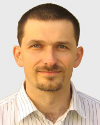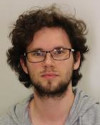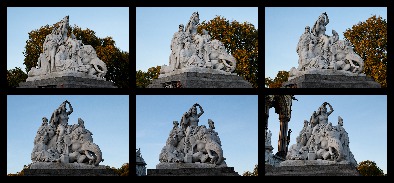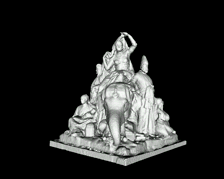Table of Contents
Upload system
Forum
Schedule: B4M33TDV BE4M33TDVXP33VID
Students: B4M33TDV BE4M33TDVXP33VID
Faculty web: B4M33TDVBE4M33TDVXP33VID
TDV − 3D Computer Vision (Winter 2025)
Motivation
This course introduces methods and algorithms for 3D geometric scene reconstruction from images. The student will understand these methods and their essence well enough to be able to build variants of simple systems for the reconstruction of 3D objects from a set of images or video, for inserting virtual objects to video-signal source, or for computing ego-motion trajectory from a sequence of images. The labs will be hands-on, the student will gradually build a small functional 3D scene reconstruction system.
Lectures: Wednesday 11:00-12:30
Location: KN:E-301
Lecturer: Radim Šára
Details under Lectures.
Updated lecture slides are ready for download before the lecture. They get annotated during the lecture and appear here after the lecture. Recordings from the previous course run are meant as supporting material, not a substitute for lectures. The live version may differ from the recordings.
Exercises (requirements)
Location: KN:A-420 (use the main staircase in bldg A to the 3rd floor, turn left, take the side stairs at the end of the corridor to 4th floor, the room is on your left)
Teacher: Martin Matoušek, Jaroslav Moravec
Details under Exercises (technical content and assessment).
Notice: according to the study and examination code of CTU1), attendance at lectures is not mandatory (but recommended). However, students attending exercises are required to be theoretically prepared. The necessary theory is explained at the preceding lectures and can be also found in the recommended literature.
Requirements for the Credit
- Attending the exercises is mandatory, two absences are allowed.
- Submission/presentation of all required intermediate results.
- Submission of all required elementary methods that must pass automatic check.
- Submission of results of the term project.
- Submission of all homework problems assigned during lectures.
Assessment
Student assessment is based on scoring in the nominal range 0−100 points. There is also possibility to obtain some additional bonus points. The points are allocated to lectures, labs, homework problems and exam as follows:
| Nominal points | Minimal points | Bonus points | |
|---|---|---|---|
| Exercises | 45 | ||
| Homework assignments given at lectures | 7 | 16 | |
| Midterm test | 11 | 3 | |
| Exam test | 24 | 3 | |
| Exam – oral | 13 | 5 for an A | |
| Total | 100 | +16 |
Assessment of Exercises is described in detail in the section of exercises.
The total of all points, including the bonuses is arithmetically rounded up and clipped at 100.
The grade is then given by the standard table (100−90⇒A, 89−80⇒B, 79−70⇒C, 69−60⇒D, 59−50⇒E, ≤ 49 ⇒ F).
Exam
The first test is done during the semester. The second test is a part of the exam at the end. The exam has two parts. Usually, we do the test on one day and the oral part on another day. The oral part is optional, except to achieve the A grade; it tests the ability to solve a small problem (at least 5 points from the oral part must be achieved to obtain an A).
Additional Info
There is also a discussion forum (see link in the page head). Questions, feedback and comments on lectures or exercises are welcome.
Contacts
| Lectures: Radim Šára | Exercises: Martin Matoušek | Exercises: Jaroslav Moravec |
sara@fel.cvut.cz | Martin.Matousek@cvut.cz | moravj34@fel.cvut.cz |
| KN, room 103 | Dejvice, CIIRC, room B606 | KN, room 103 |
| Virtual office | Virtual office | |
| phone (22435) 7203 | phone (22435) 4221 | |
| Usermap | Usermap | Usermap |
 |  |  |

